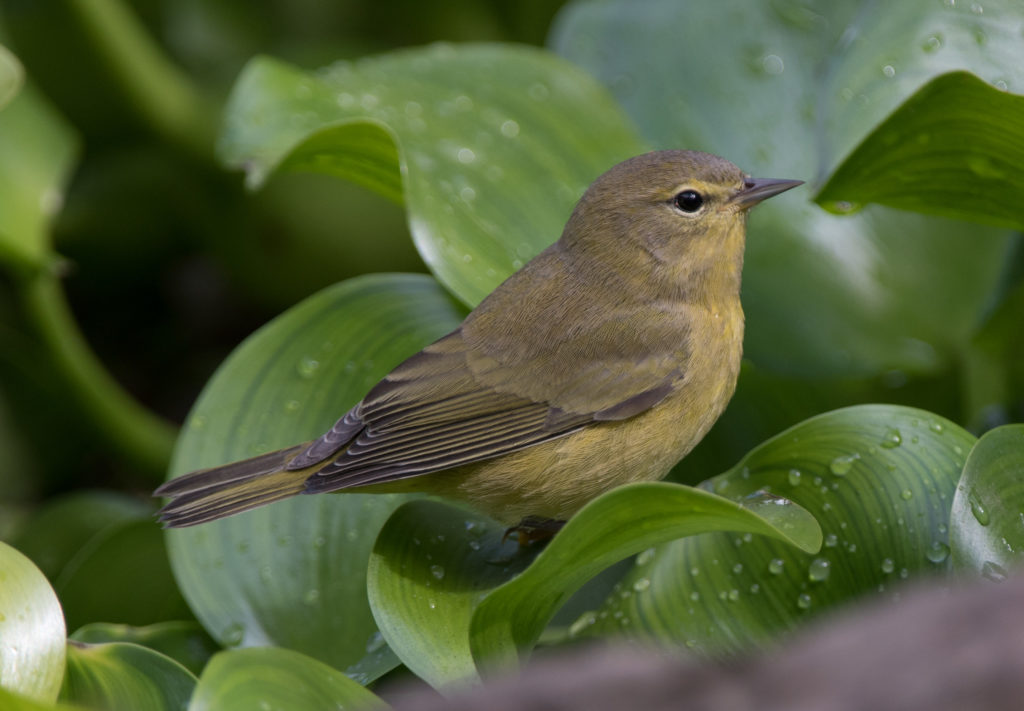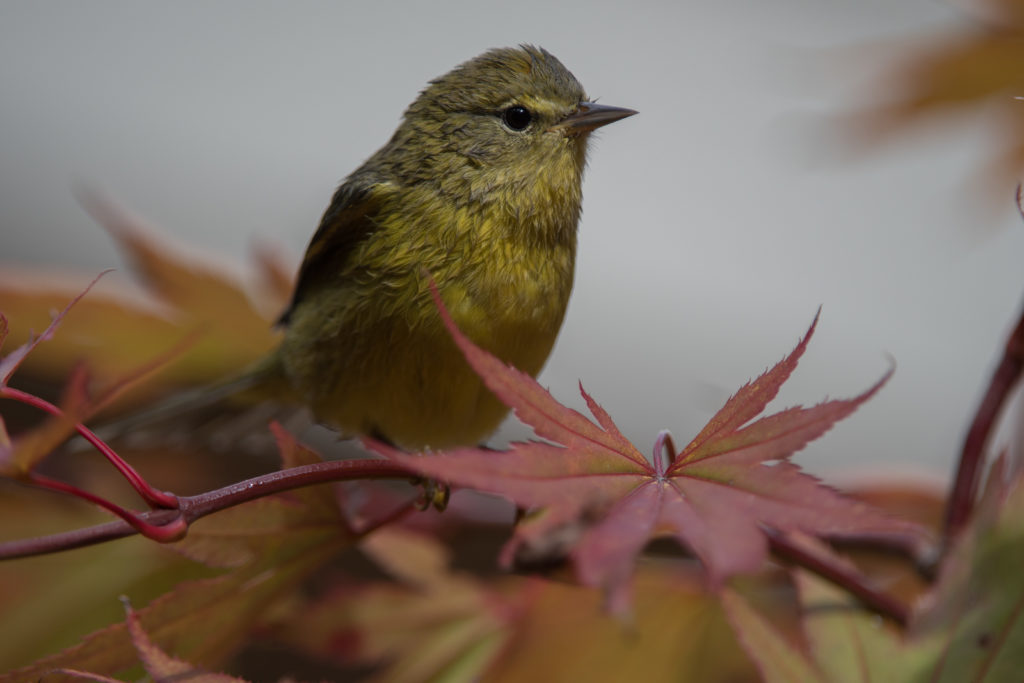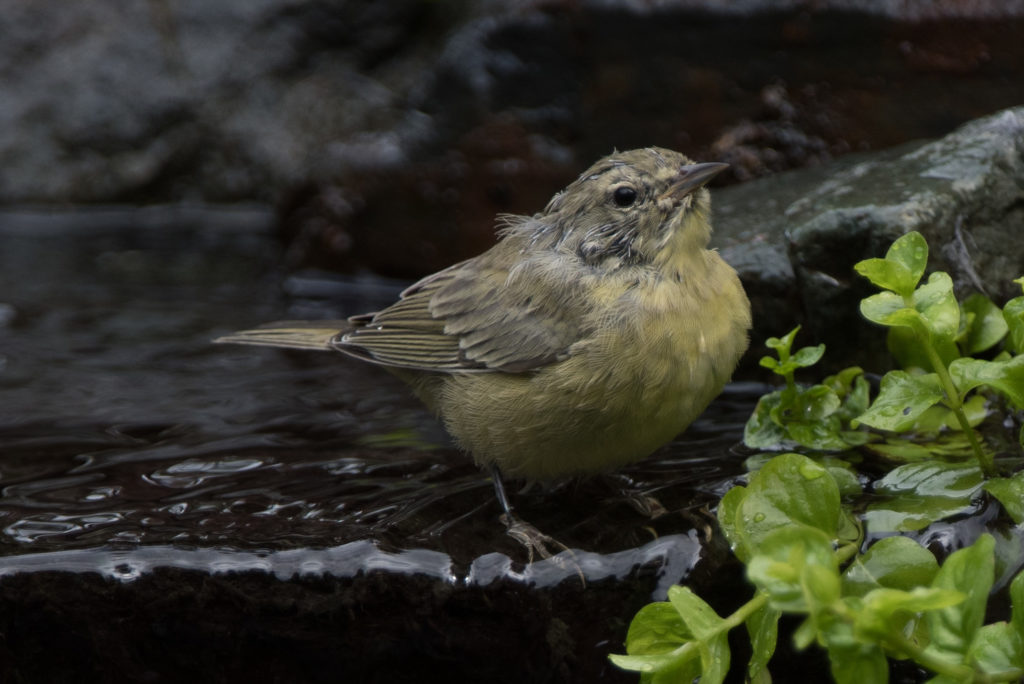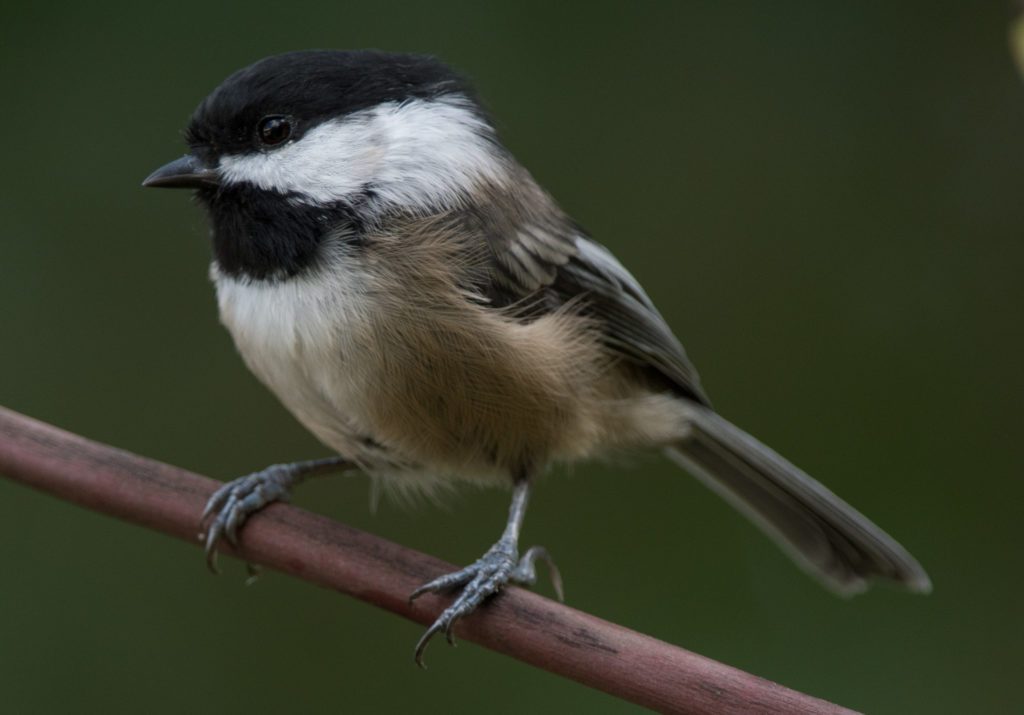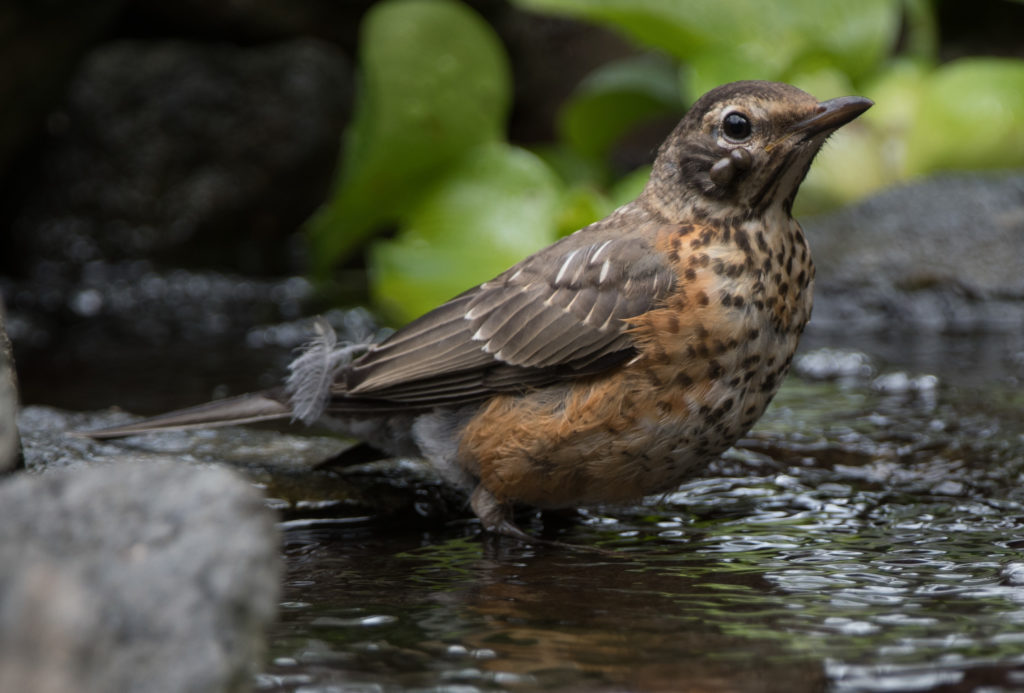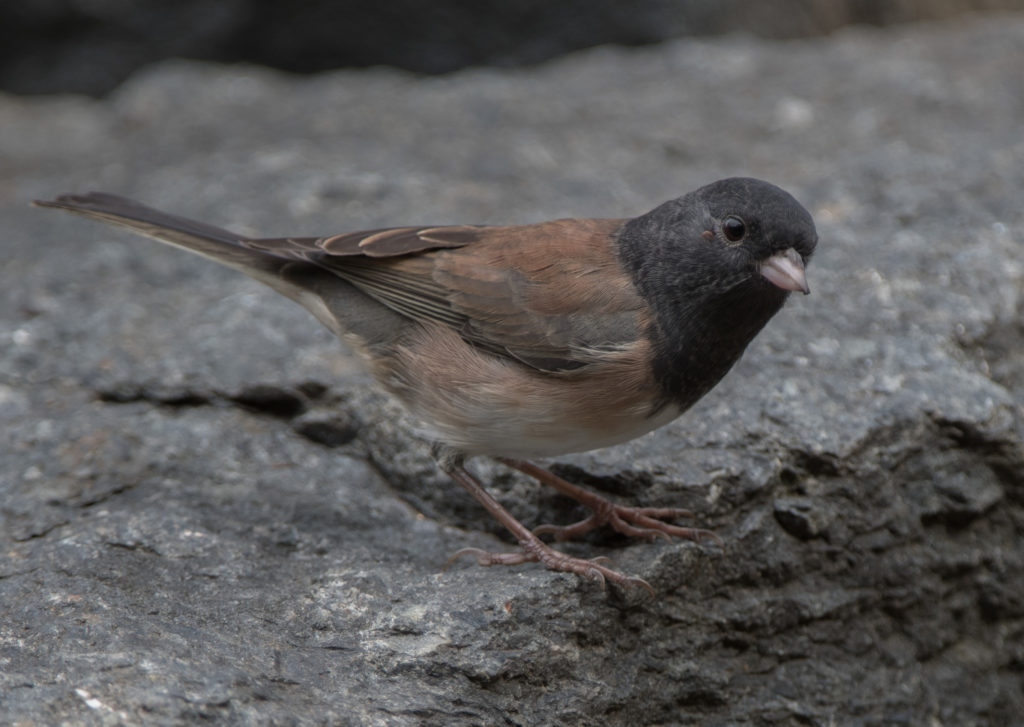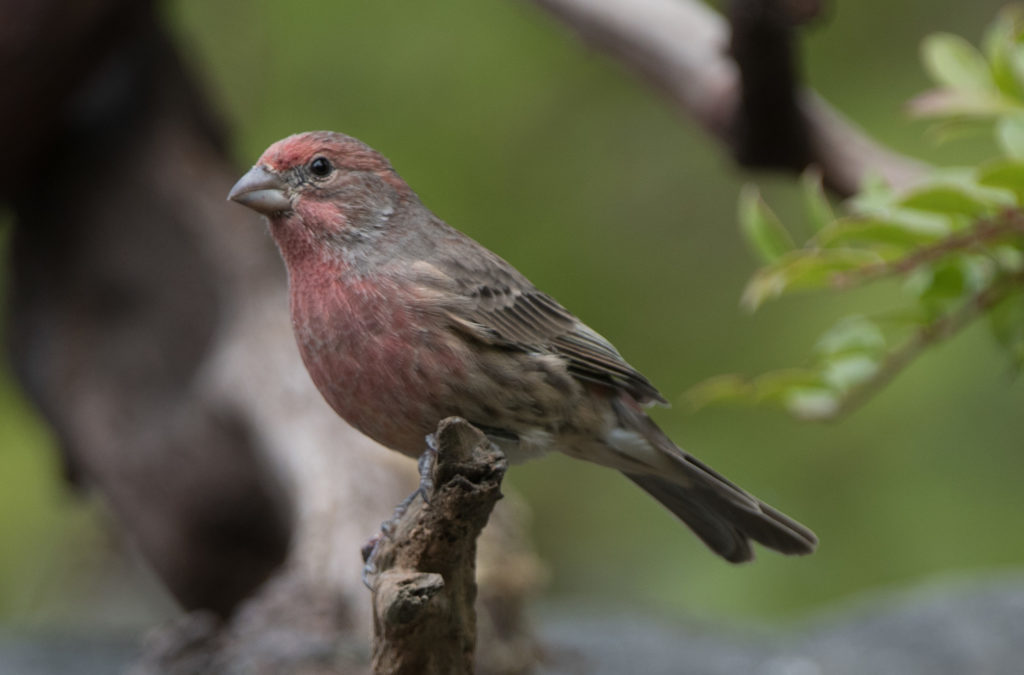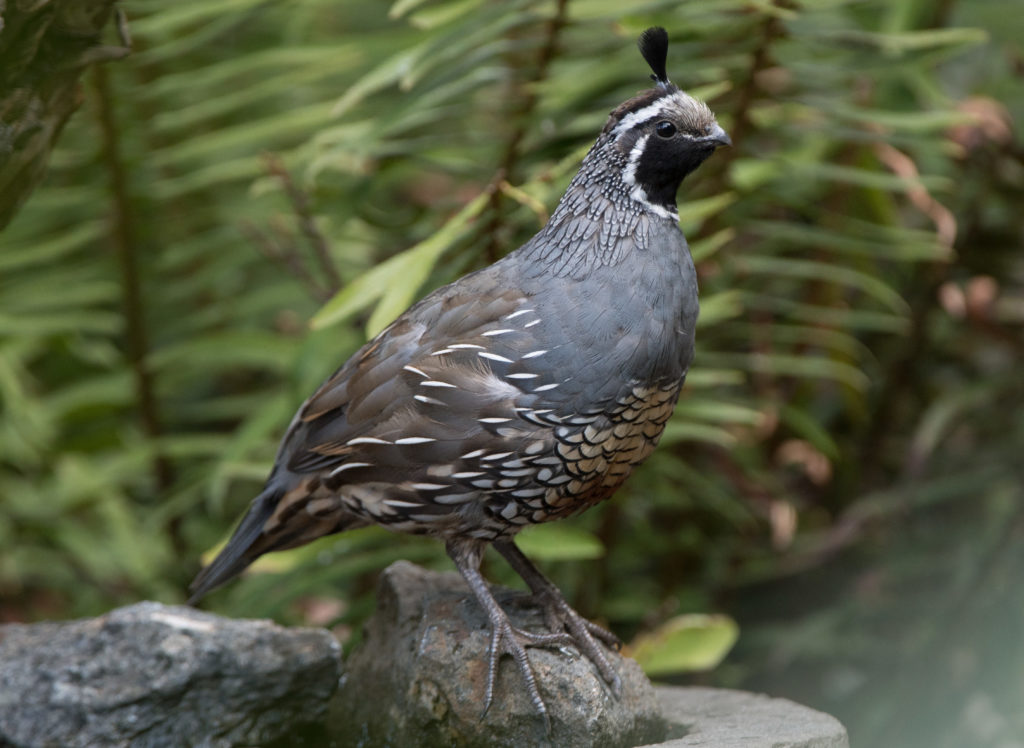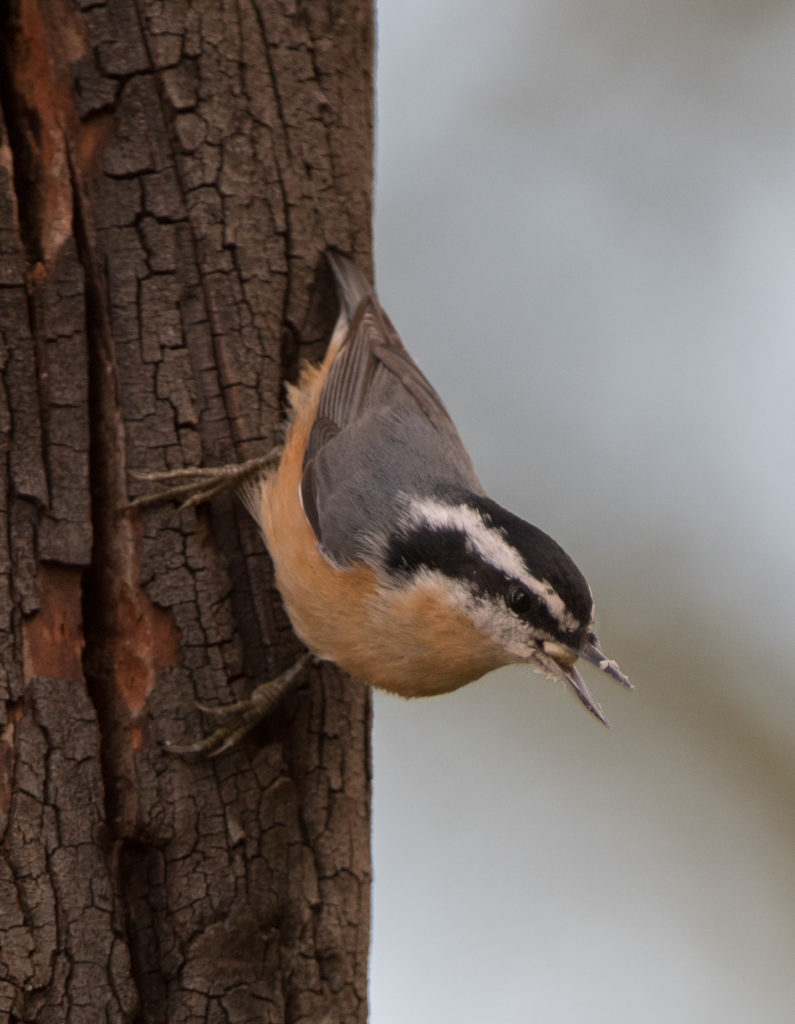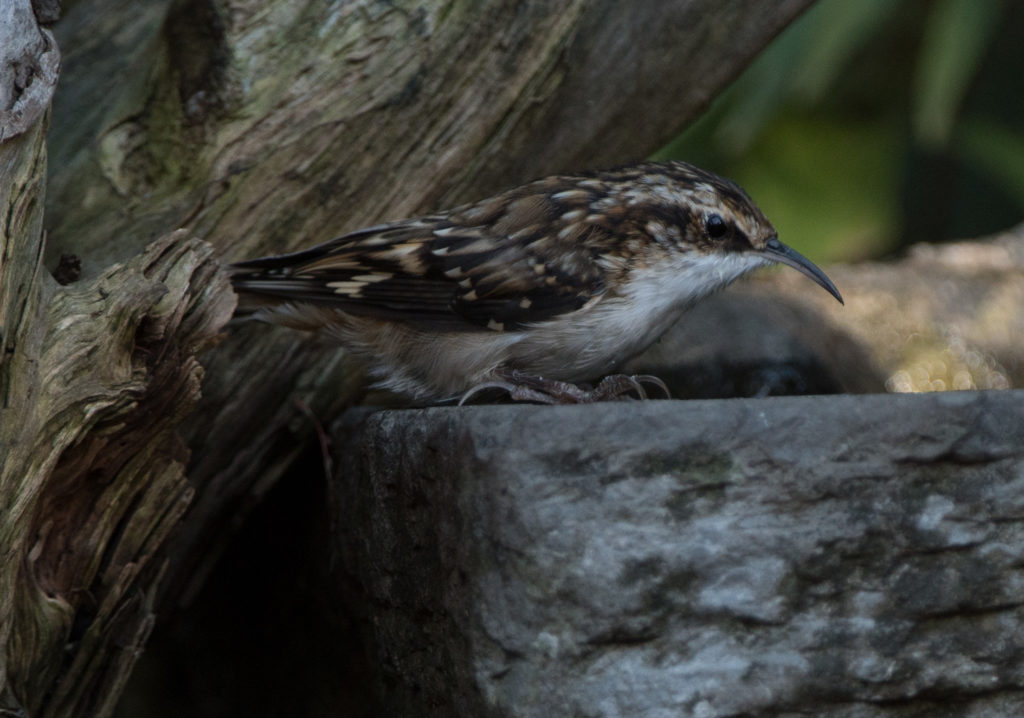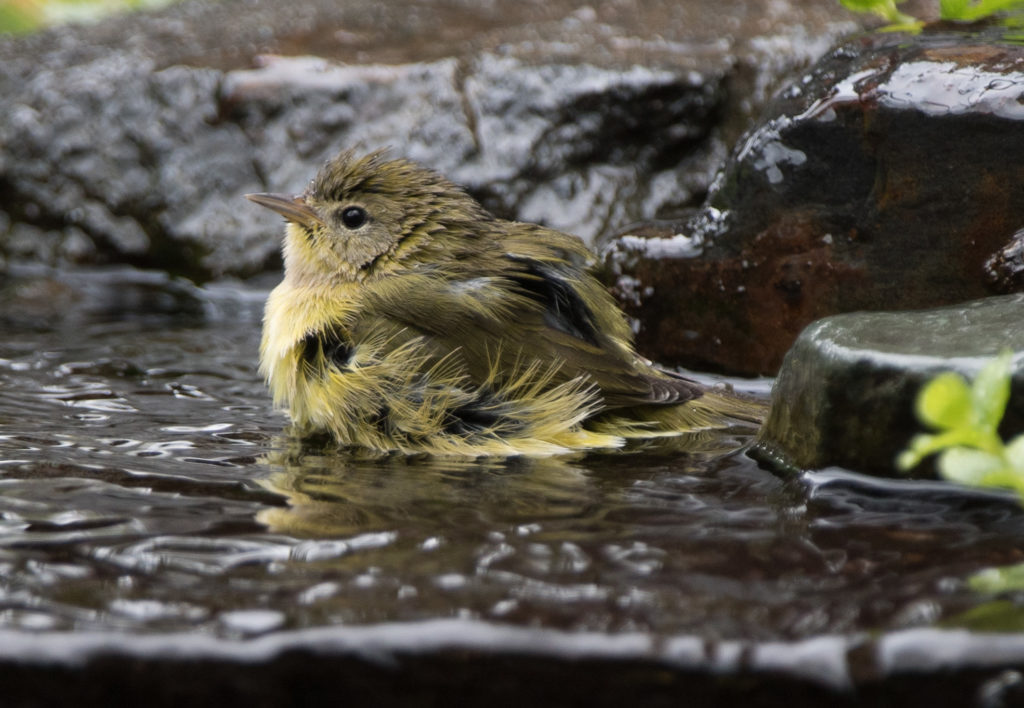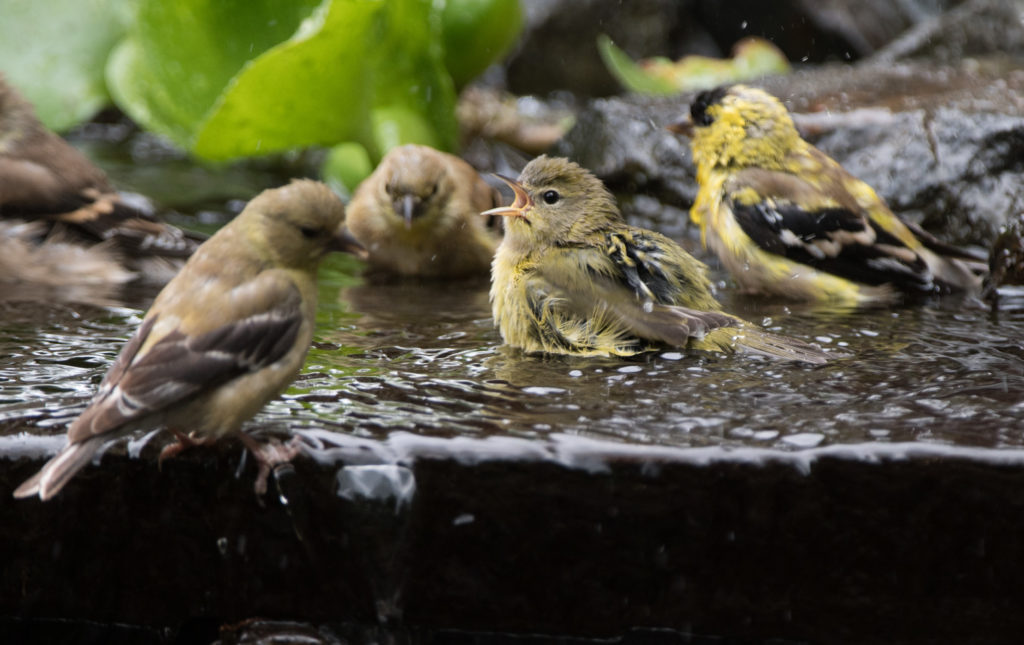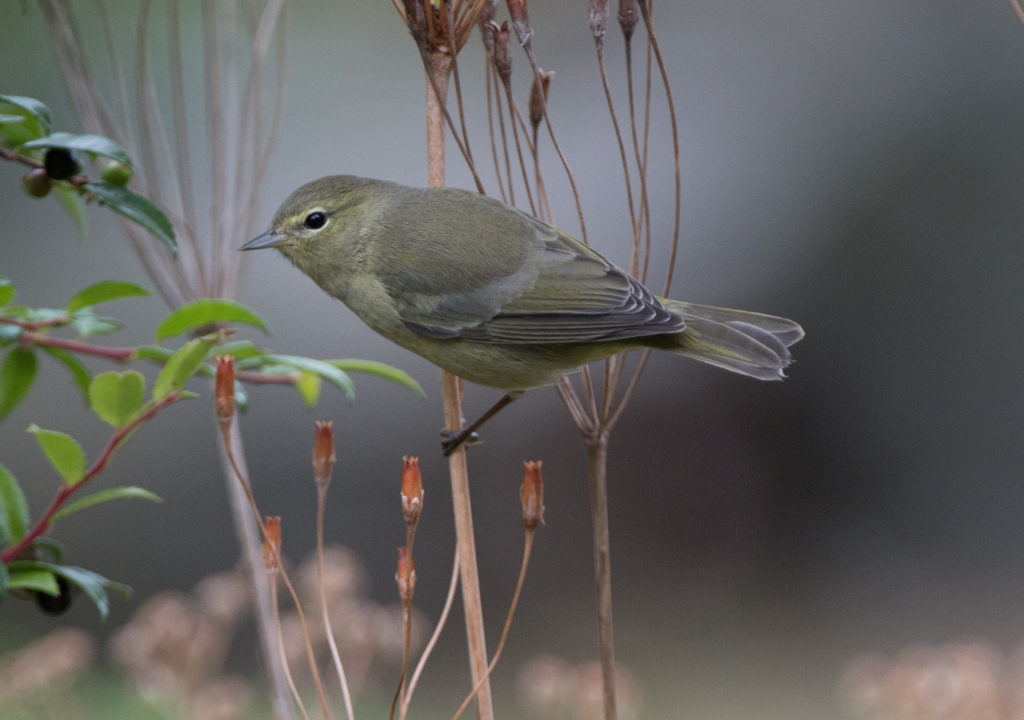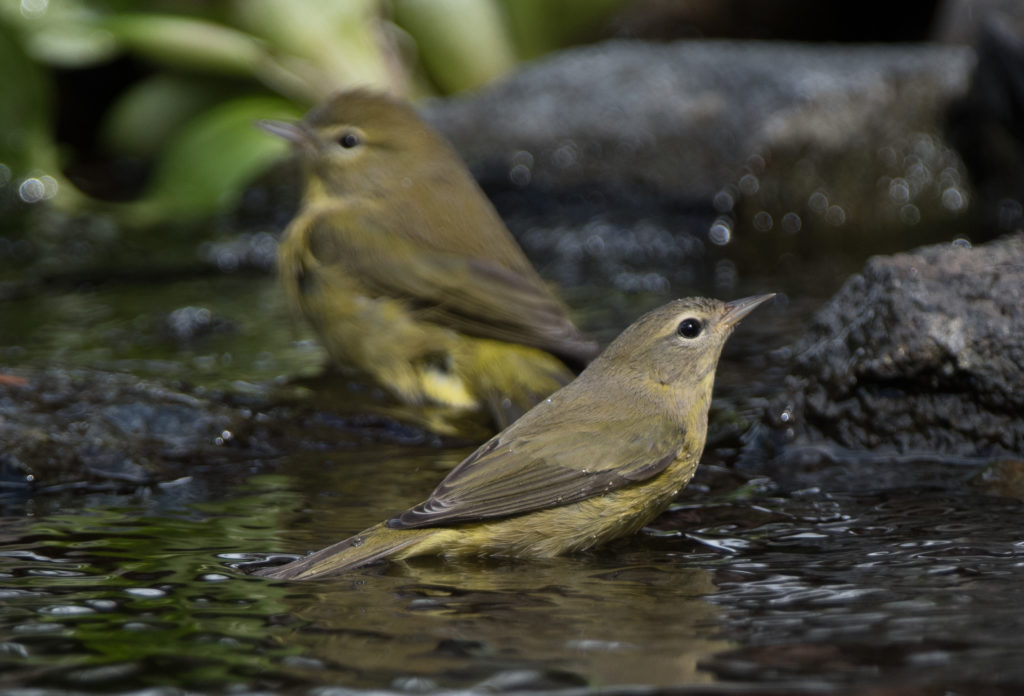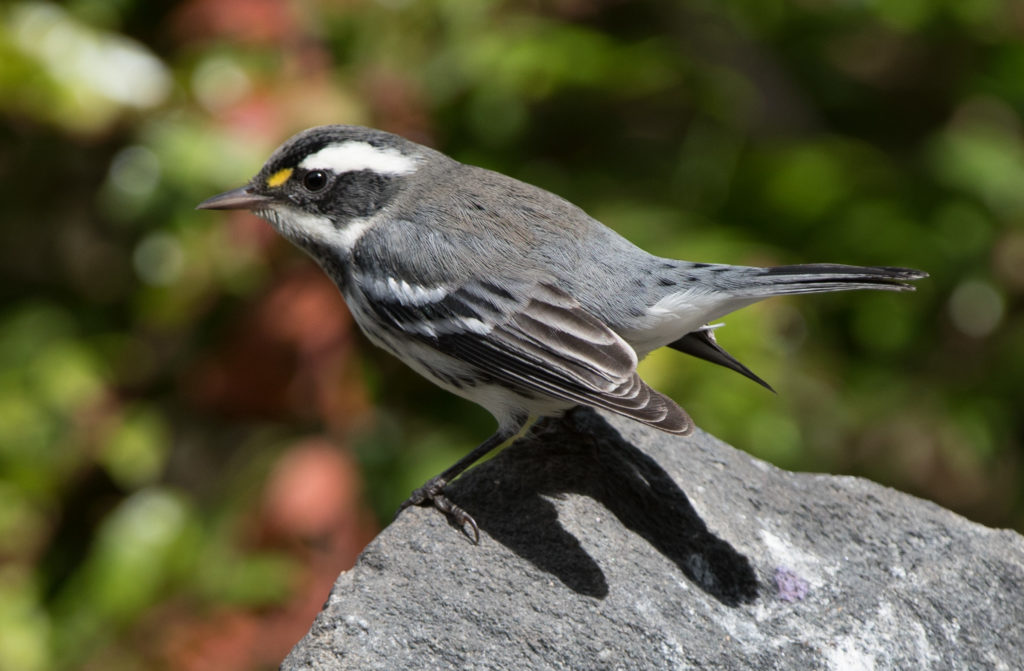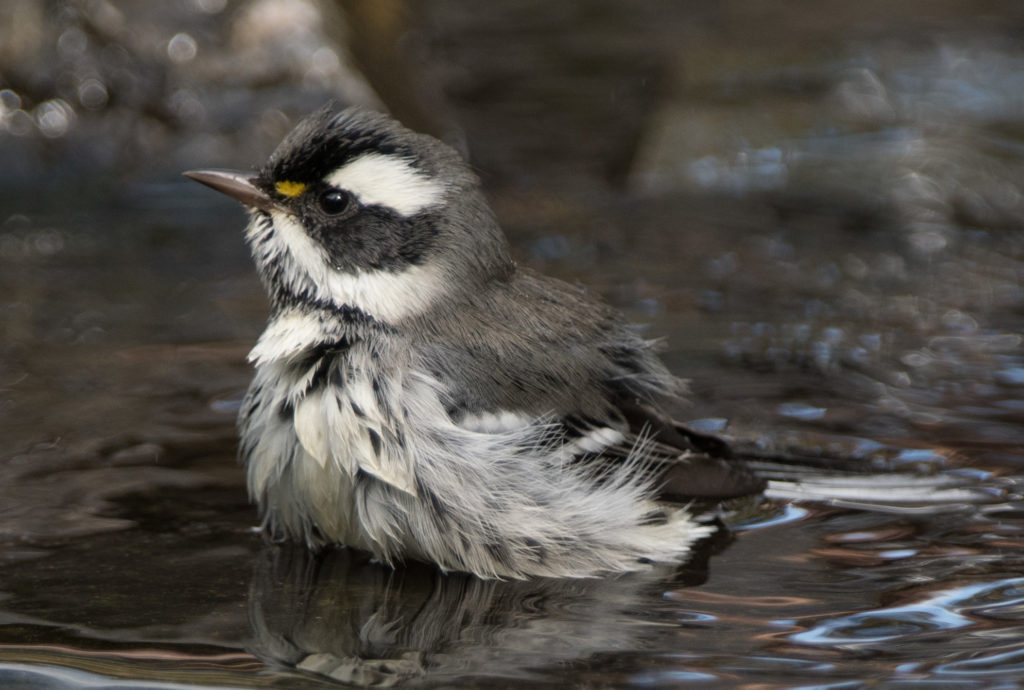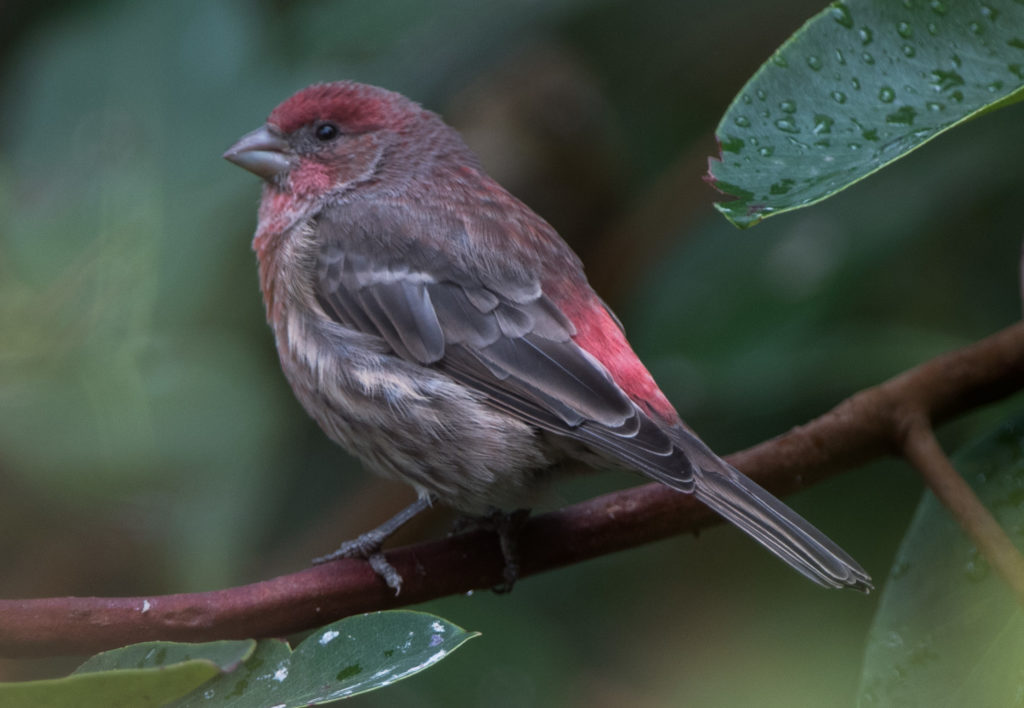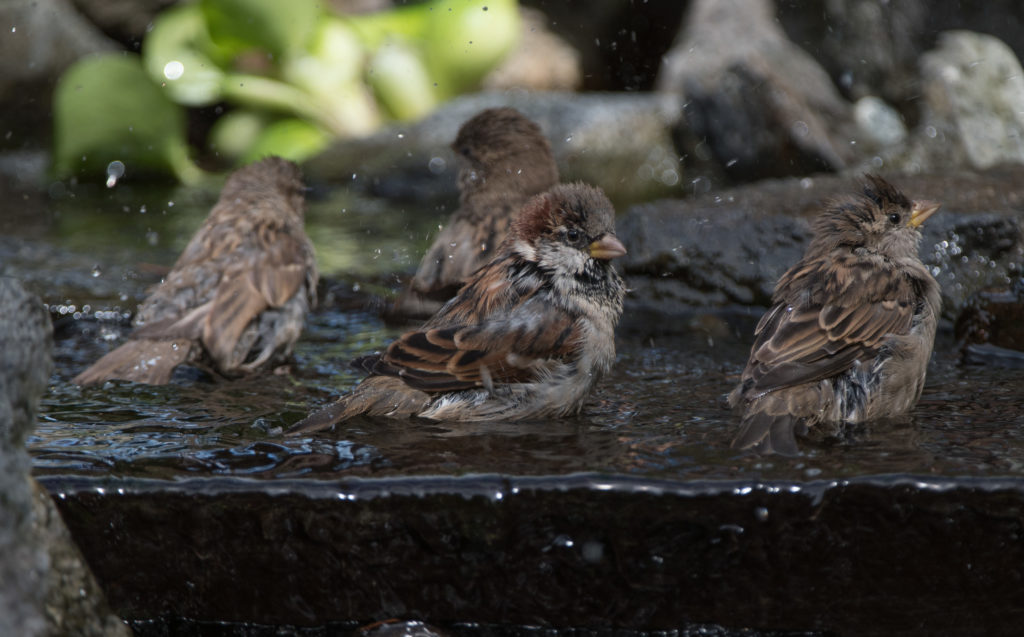I had a delightful and productive couple of hours of birding in the afternoon on Monday, September 5, 2016.
The entire day was a little on the cool side and overcast. The lack of direct sunlight is actually an advantage for bird photography as there is not a problem with shadows on the birds, either from leaves and twigs or from the birds’ beaks. It also means that you don’t have to deal with the contrast that can sometimes detract from photos.
I was busy with other activities during the day and didn’t make it into the yard until about 3:30pm when I immediately saw an Orange-crowned warbler. Over the next two hours I had the following sightings in the yard:
Orange-crowned warblers
These are probably our most numerous visitors during this fall migration. Unfortunately these are easily confused casually with our second most common visitors…
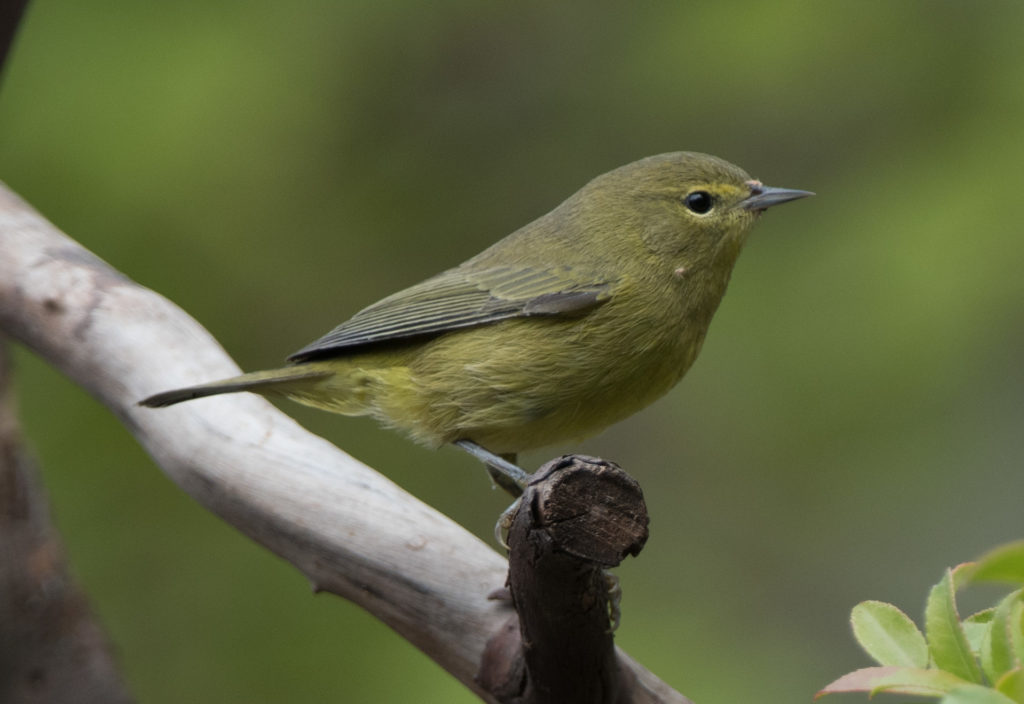
Yellow warblers (most juveniles or females)
The Yellow warbler is generally an unusual visitor to the yard, so it’s been somewhat of a surprise to have multiple visits from them. I seemed to have one male, probably a juvenile…
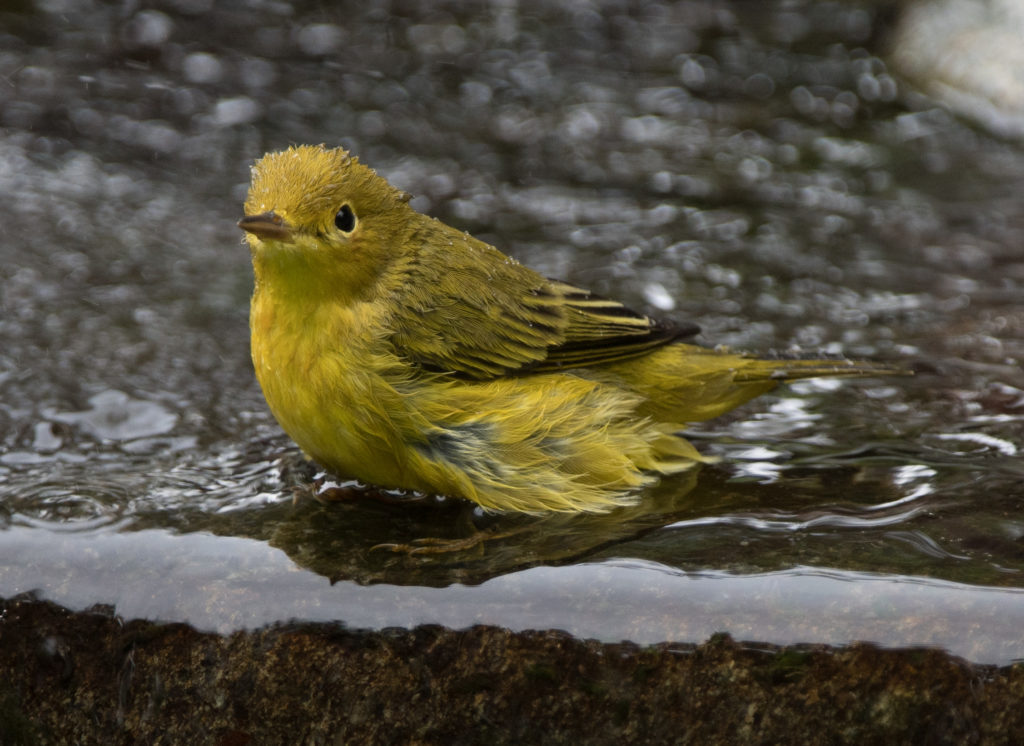
with the rest being juveniles or females…
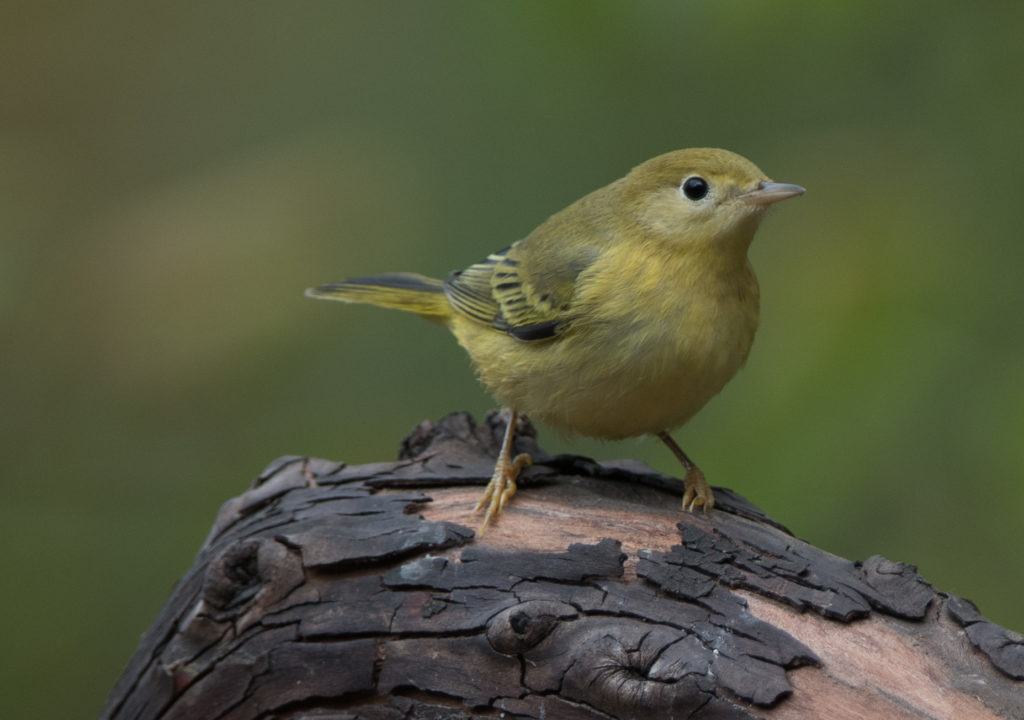
Wilson’s warbler (m)
Usually our most common warbler in the yard, this year they’ve been quite scarce. In the past week or so we’ve had a couple of females, but on this day we had what was clearly a male.
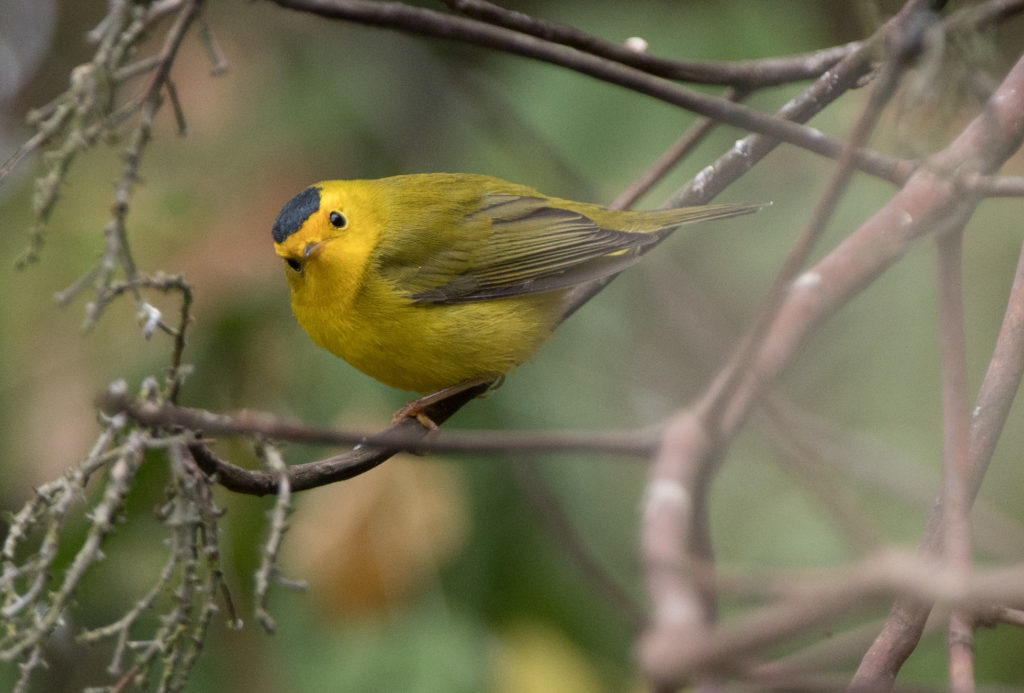
Townsend’s warbler (female or juvenile)
We generally have about one Townsend warbler visit each year, so I consider this visit unusual. It was also the crown to a four-warbler day in the yard. (My wife saw a male Townsend’s warbler the following day.)
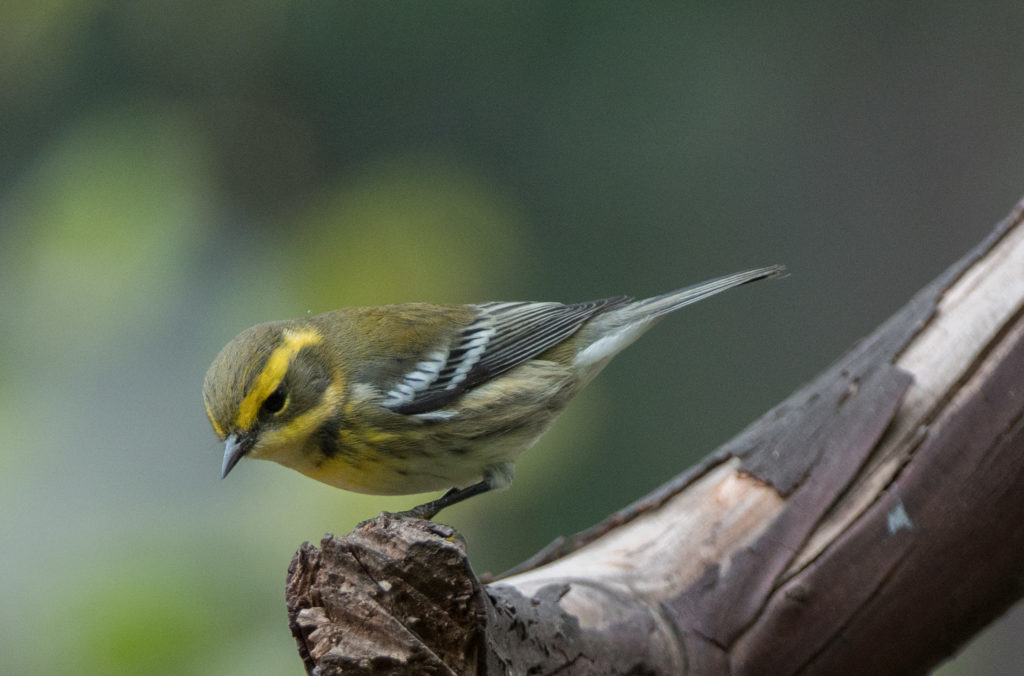
Golden-crowned kinglet (f)
The first bird I was able to photograph upon entering the yard was a Golden-crowned kinglet, apparently a female. I had one other sighting during the afternoon but couldn’t tell its sex and was not able to photograph it.
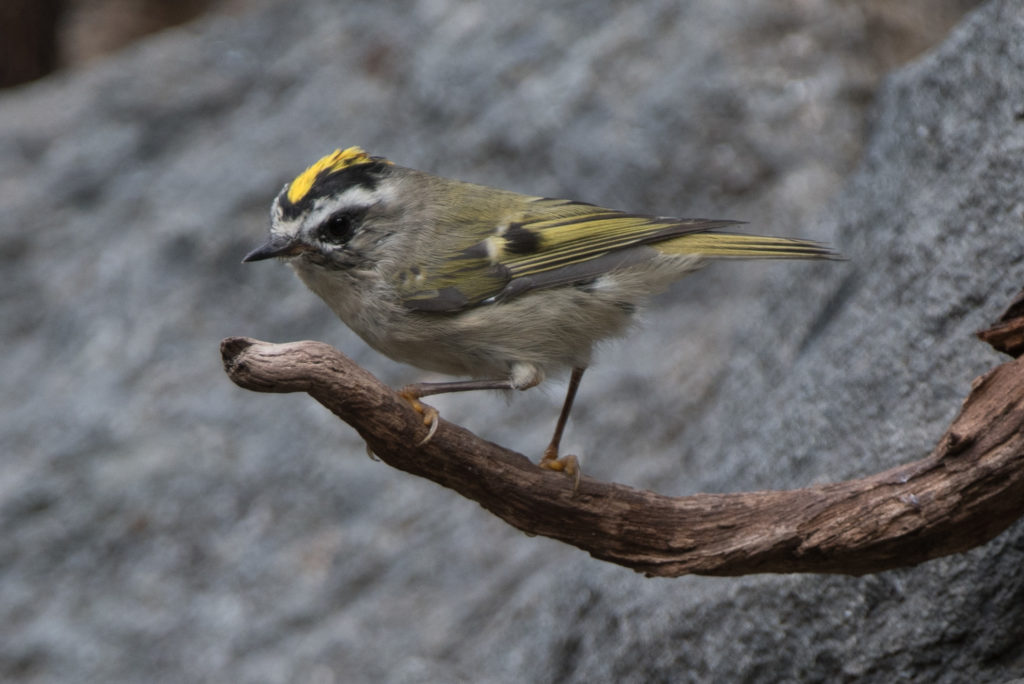
Brown creeper
A Brown creeper appeared very near to me, but at a bad angle for photography and with intervening foliage, so I wasn’t able to obtain a photograph. We have Brown creepers from time to time during the year but they were mostly absent this past summer.
Bewick’s wren
This is another unusual sighting, although they are probably in the general area more than my sightings indicate. I wouldn’t have seen this one if it hadn’t been vocalizing on one of my trips from the house. I wasn’t able to obtain a photograph of the wren.
Anna’s hummingbirds (m&f)
W have at least a pair of Anna’s hummingbirds in the yard and the male, which may be a first-year juvenile, is already establishing a territory consisting of one feeder and several blooming salvia and a coleus in the front yard. This observation was noteworthy in that the male flew to the watercourse and took a bath. This has been a common activity (especially with the Rufous hummingbirds in past years), but this is only about the second time this year that I have observed a hummingbird taking a bath.
This is the male… I wasn’t able to photograph the female…
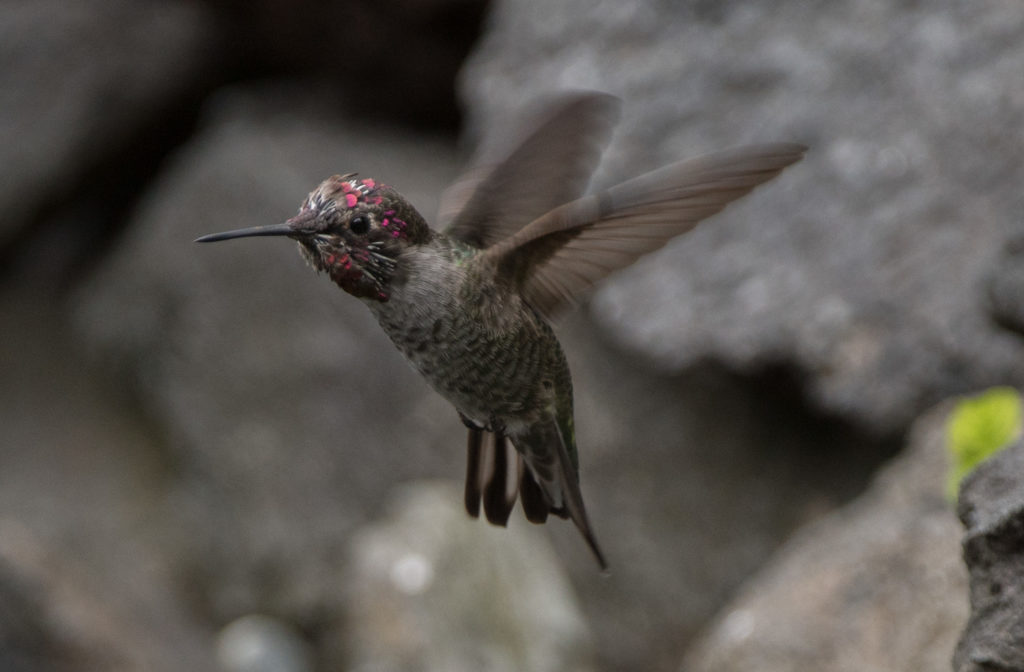
Other yard sightings that afternoon:
Hairy woodpecker (m)
Downy woodpecker (m&f)
Eurasian Collared doves (~10)
European starling (a single crippled juvenile that has been a daily visitor)
White-crowned sparrow with at least two juveniles
Red-breasted nuthatch, since breeding season in short supply
Chickadees, both Chestnut-backed and Black-capped
American goldfinches, some still feeding juveniles
Spotted towhee (f)
American robin
House sparrows
House finches
In addition to the birds, I also had the following visitors to the yard, all of which I photographed except for the two Eastern Gray squirrels which have taken up permanent residency in the yard. Listed in reverse order of rarity:
Eastern Gray squirrels
Townsend’s chipmunk (there were two observed the following day)
Cottontail rabbit
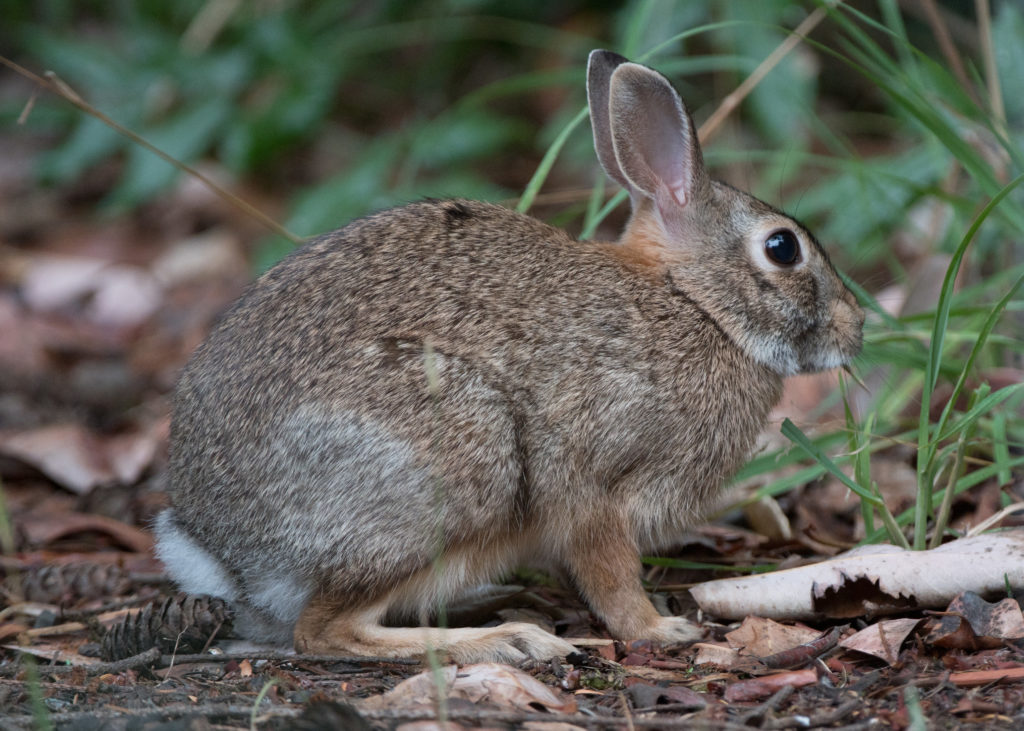
Norwegian rat (a very rare visitor which better maintain its rarity or else face deportation)
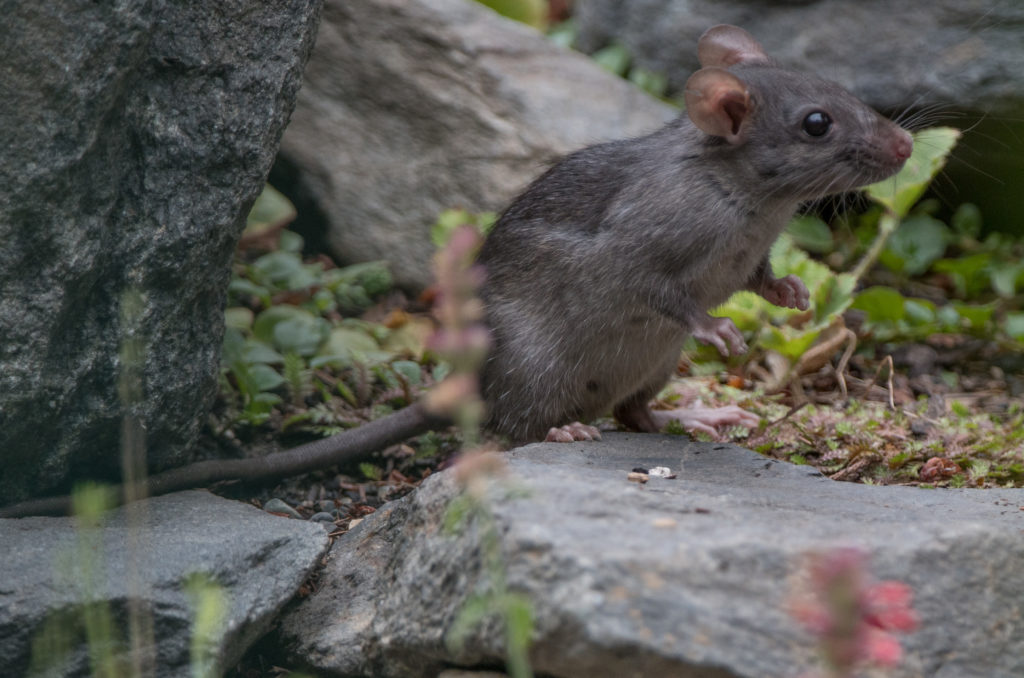
So this was a four-warbler species day and I’m finally finished with processing some 200+ photos, 135 of which I retained and most of which were birds. (As a birder, if you want a real challenge, try separating into species 85 intermingled photos of Yellow and Orange-crowned warblers, many of which are either females or juveniles, some wet from baths, taken from a multitude of different angles!) Among my prizes for the day were a few photos, taken on more than one occasion, of both an Orange-crowned and a Yellow warbler in the watercourse at the same time.
And there you have it… almost exactly two hours of observation/photography time, close to double that time in photo processing, and a couple of hours in writing and creating a blog post. And people wonder what retirees do with their time.

